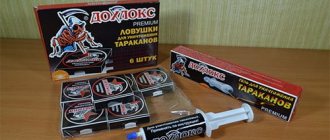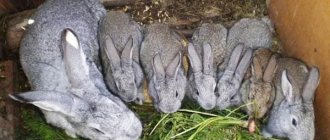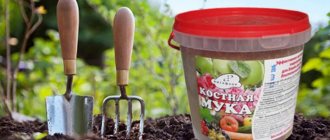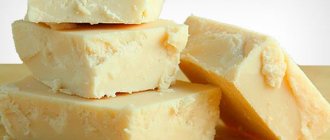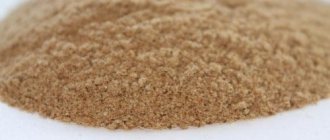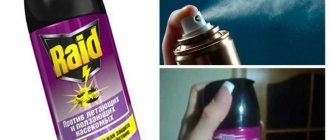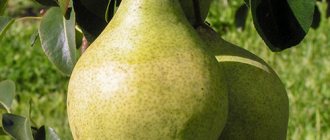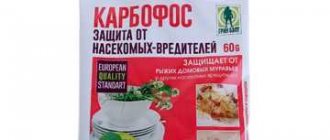Goats are bred for dietary meat and milk, and manure is a natural waste product of these animals.
Therefore, goat owners are forced to look for different ways to dispose of their excrement.
When used correctly, goat manure turns into a good natural fertilizer that fills the soil with nutrients and microelements, thereby strengthening the immune system of plants and increasing productivity.
Manure as fertilizer: introduction
Goat manure
Organic fertilizers are the most necessary in modern gardening. Perhaps it is organic matter that contains the entire volume of minerals that are so useful for various crops. Gardeners mainly pay attention to mullein, using it almost everywhere on the farm. But only a few know that as a fertilizer, goat manure contains almost seven times more useful and nutritious substances, and this makes it even more effective. Moreover, the droppings of small livestock today are more active in the soil. This makes it more digestible, and thanks to goat droppings, the fertile layer is restored much faster, and this, of course, has special advantages.
In this article we will dwell in more detail on the description of the most useful properties of organic fertilizer, and will also tell you what the advantages of not only goat, but also sheep droppings are, which are also used to feed various crops and soil in general, but not all gardeners are sufficiently aware of the beneficial properties of these components and substances.
What is he?
The digestive system of small ruminants (SCR), which includes goats, is very different from the digestive system of cattle (that is, cows) and pigs in that the feces are less moist, formed into balls 0.5–2 cm in size.
Therefore, goat excrement often resembles a bunch of large dark, almost black peas . In addition, they have a less strong odor than cow or pork, because they contain less skatole.
In terms of its chemical composition, it is completely identical (to sheep manure), because the digestive tract of both types of animals has the same parameters.
Therefore, goat manure contains noticeably more nitrogen than the excrement of cows or pigs and is comparable in this parameter to bird droppings. In addition, it has a higher specific content of organic substances , which is caused by lower initial humidity.
However, after drying, the organic content in any bird or animal excrement is approximately the same, which cannot be said about other substances important for plants.
Goat manure as a fertilizer: beneficial properties
Goat manure
Mineral fertilizers applied to plants are their food. But organic matter is food that is intended rather to nourish the soil, making it even more fertile and saturated and, accordingly, favorable for a wide variety of garden crops to grow in it. Without organic matter of animal or plant origin, the soil becomes depleted. In order for the soil to recover and regenerate faster, the top layer of humus should be replenished. If you do not do this, then the vegetables will be completely tasteless, watery, and will not contain the entire useful complex of vitamins, microelements and antioxidants that are so necessary for the human body.
In the West, organic products are almost several times more expensive than standard mineral fertilizers. This is due to the fact that organic matter is a valuable additive. Products grown with organic fertilizers are also valued much higher. Yes, it is not so beautiful, but it is grown on absolutely natural additives, which means it is completely safe for the human body, for its health.
Farmers most often use those types of organic matter that they have in abundance. This applies to manure - usually mullein, horse and rabbit manure, as well as sheep or goat droppings are taken. Bird droppings can also be used for the same purposes, since they contain a very large amount of nitrogen, potassium and phosphorus, and these substances are valued due to the fact that they are the basis for the growth of healthy and high-quality crops. A component such as calcium also plays an important role, since it has a special effect on the plant’s resistance to stress, as well as on the degree and speed of its growth, development, rooting and, of course, on immunity against various bacteria and fungi.
How good is this plant food?
Many gardeners prefer horse manure. It is of higher quality than cow, rabbit, and goat manure.
This is explained by the following positive qualities:
- It contains many nutritional components, especially nitrogen, potassium, phosphorus, and calcium. This entire complex of nutrients has a beneficial effect on the development and productivity of crops.
- This type of organic fertilizer is lighter, loose, dry, and quickly decomposes.
- Increases resistance to various infections, as well as other adverse factors.
- Horse feces heat up faster and cool down slowly (can retain heat in the soil for up to 2 months).
- Does not contribute to the development of pathogenic microflora.
After adding the organic component, the soil is saturated with carbon dioxide, the soil is loosened, and missing microelements are replenished. At the same time, it does not change the acidity of the soil, does not interfere with the passage of air and maintains the water balance at the proper level.
Humus is a substrate that decomposes within 3–4 years. It is the most useful and effective form of fertilizer. It contains the highest concentration of nutrients that are easily absorbed by the soil. Horse humus contains fewer parasites and pests, and the composition stays in the soil longer. It looks like a homogeneous, crumbly brown mass. Another advantage is the absence of odor.
Sources
- Oleg Vladimirovich Tanimov Theory of legal fictions. Monograph; Prospect - M., 2007. - 859 p.
- Kirillov A. A. Commentary on the Federal Law of July 20, 2012 No. 125-FZ “On the donation of blood and its components” (item-by-item); Justitsinform - M., 2013. - 631 p.
- Grishaev, S.P. Civil law in questions and answers / S.P. Grishaev. - M.: YURIST, 2004. - 144 p.
- Decker 99 secrets of P&G success. The principles and rules that ensured the success of Procter & Gamble / Decker, L. Charles. - M.: Eksmo, 2006. - 320 p.
- Contract Law / ed. G.V. Petrova. - M.: Image, 1992. - 593 p.
Characteristics of litter, composition, how to use goat manure as fertilizer
How to Apply Goat Manure
Small livestock litter - goat and sheep manure. Among all organic matter, these fertilizers are considered very valuable for an individual plot of land, or for large farms where fruit trees and a wide variety of crops are grown. Also, goat and sheep droppings are great for feeding plants that grow in greenhouse conditions. This type of organic matter is a hot type. This is due, first of all, to the fact that it is during decomposition that it releases the largest amount of heat.
One thousand kilograms of goat manure contains the following amounts of substances: approximately five kilograms of nitrogen, six kilograms of potassium and 2.5 kilograms of phosphorus. Also, the gardener himself can add straw or sawdust to the goat droppings, as they act as bedding. To a greater extent, this is most often used for households, and then for farms, but in general a lot depends on the preferences of the gardener himself, which is best to focus on.
If we talk about farming, then manure is collected in a slightly different way: for this, the animal waste is collected by the gardener or farmer in a separate container under the floor, and then taken to settling tanks. Further, it is in these settling tanks that the substance ferments, becoming saturated with more and more useful and important substances. This substance has its own name - slurry, it is very useful, it can be used in farms and gardens, as well as in fields and gardens where industrial cultivation of any crops is carried out.
There are animals that graze on pasture and provide manure without bedding. It does not have such a high moisture content, and this manure is considered more economical in comparison with the very first type. The problem is to collect it from the site - this usually takes gardeners a lot of time, and this is quite a big problem. Also, collecting can take a lot of your own physical energy, so you should be very careful when choosing to collect manure.
Benefits, is goat manure good for you?
Of course, goat and sheep droppings have their benefits. Reviews from gardeners about goat manure indicate that this fertilizer is applied in small quantities. The benefits of goat manure are even greater than those of the popular mullein, and this has been tested in practice. Typically, one hundred square meters requires about five full buckets of mullein. Goat manure in this regard is much more economical - approximately two buckets are required per one hundred square meters of land. The difference, as we see, is obvious.
Fresh or rotted?
Manure can have several forms of decomposition:
- fresh is rarely used and can harm plants;
- half-rotted is used more often in the fall, after harvesting, should not be used under plants, it can lead to their death;
- the rotted one loses almost half its weight, it is used for application when digging, you can water the plants with an aqueous solution, and use it for seedlings;
- humus is a completely finished product for the soil. The most valuable fertilizer, contains many nutrients and beneficial substances. Suitable for any plants, applied when digging in spring or autumn.
Now the question - humus or manure as fertilizer, which is better, will no longer arise. Humus is the most useful fertilizer. There has long been a debate among gardeners about whether it is better to use humus or black soil.
It is not recommended to use even inorganic fertilizers instead of manure, but together they will provide much greater benefits to the plants and crops, and the result will be excellent. Any organic matter gives strength to the soil, fills it with nutrients and contributes to a good harvest.
Among fertilizers made from manure, horse and cow manure are considered the best. Every gardener prefers to use one or the other for his dacha, but so far no one has figured out which one is better.
Various types of composts are used: poultry, mullein, horse, sheep, rabbit and other animal waste products.
Goat manure: use in the garden
Since goats feed only on plant components, the reaction from the droppings is very alkaline. Goat droppings contain a high content of carbonates, which can be very quickly absorbed into the plant, supplying it with all the necessary beneficial components, microelements and macroelements for growth and development. If goat manure is applied in the spring along with fertilizing, then the crop will receive the most necessary substances throughout the summer, which will have a positive effect on the growth of the crop and its fruiting. Bacteria contained in the soil can very quickly process organic matter, and therefore the soil is much faster and more efficiently enriched with various substances. In addition, substances can accumulate in optimal quantities, so the gardener does not have to worry too much about the frequency of fertilizing, since sometimes a single application of fertilizer in the spring is enough for the crop to receive all the necessary substances.
If we talk about intensive farming on an industrial scale, then pure products that will be safe for the human body can be obtained precisely thanks to organic fertilizers. In addition, it will also be possible to add some minerals to them, as a result of which the gardener will receive an artificially created complex fertilizer, which will be absorbed by plants by approximately 85-90%, and this is an ideal indicator. When compared with conventional mineral fertilizers, they are only absorbed by 30%, and the rest can accumulate, which is largely not counted.
The use of goat manure is possible in various states - both liquid and dry forms. It all depends solely on the length of time the waste was in the pit or pile. If the manure is half-rotted, it will take several more months to mature to reach its most effective state. Rotted manure can be obtained approximately nine to twelve months after it has been collected. It is also recommended that the gardener water the heap or pile with water so that the required level of moisture is maintained in the manure.
Fermentation of manure depends solely on the amount of moisture supplied to the substance. Typically in dry form, the substances in manure may slow down, and the amount of nutrients overall may be reduced by about half. This is especially true for nitrogen, since it evaporates very easily. If manure is stored outdoors and the gardener does not cover it, it will remain an organic amendment, but its nutritional value may disappear altogether.
A completely decomposed substance is called humus. There is no bedding, it is very dry, and at the same time very light. The volume and weight of the substance can then decrease by approximately 60-70%. But not every gardener manages to bring manure to this state, although it is believed that humus is the most valuable additive to the soil, which, moreover, is also completely safe for plants. It can be digested by microorganisms much faster, and also attracts earthworms to the area, whose bodies also produce a certain amount of substances. Humus contains the smallest amount of nitrogen. At the same time, substances such as potassium and phosphorus are not lost at all, so if a gardener introduces humus in the spring, it is recommended to additionally feed the plant and soil with nitrogen fertilizers.
Soil acidity
The initial acidity of goat manure is 7–8pH, that is, closer to neutral.
However, during the process of decomposition, this parameter decreases slightly, approaching acidic (5–6pH), and the size of the change depends on many factors.
Therefore, it is very important to check the acidity of the soil using a pH meter before using manure or humus from it. Then measure the acidity of the soil and compare it with the requirements of the plants on the site.
This will help maintain the acidity of the soil at a level optimal for plants, because if the soil turns out to be too acidic, then it is enough to add a little ash or dolomite flour to it.
If you do not monitor the acidity, then this soil parameter will go beyond the optimal range, which is why the plant will begin to hurt and may die.
For which crops is it better to use goat manure as fertilizer?
Many gardeners are interested in which plants respond most positively to manure and which ones love this organic component most. Note that almost all plants can withstand the addition of organic matter, especially those that are rich in the nitrogen component. The exception is the group of coniferous crops, as well as shrubs, which are well fed with nitrogen from the air. Therefore, it should be noted that goat manure can be suitable for absolutely any garden and vegetable crops, the main thing is to apply it in accordance with the standards, adhering to the schedule.
Berry crops simply need components such as phosphorus and potassium to bloom abundantly. They are contained in large quantities in the droppings, so after organic fertilizing with goat manure, fruit sets are excellent, and in general, fruiting only intensifies. Potassium is also responsible for the fact that the plant absorbs sugar, which is why the fruits become so sweet and juicy. If a gardener wants to have confidence that he is applying organic fertilizers correctly, then it is best to apply the manure in the autumn, when there is no crop in the garden and it is completely free for adding components. The droppings should be evenly distributed throughout the entire area, and then this area should be intensively and thoroughly dug up, the ground should be well loosened.
Benefits and harms
When used correctly, goat manure does not harm any plants, because it is a natural product that plants feed on under natural conditions. It successfully replaces modern organic and mineral fertilizers, allowing you to grow natural, environmentally friendly products.
The disadvantages include an increase in soil acidity after applying manure or products made from it.
Therefore, for maximum positive effect, you must first measure the acidity of the soil, then adjust it with ash, dolomite flour or lime. If we neglect the technology for the correct use of this material in the garden, then instead of benefit it will do a lot of harm.
How to dilute goat manure
In the spring, gardeners can scatter droppings on the snow that has not yet melted. Fresh droppings contain a huge amount of ammonia, so before the snow completely melts, the excess ammonia will have time to evaporate, and all the nutrients will end up in the soil along with the melt water. This method does not require the gardener to waste a lot of time and effort, but at the same time it is effective.
You can also prepare a liquid solution based on goat droppings. To do this, fill a plastic barrel to the brim with water and fill it about a quarter full with either dry or fresh goat droppings. The solution should be infused for a week, and when it begins to ferment, this solution can be mixed with water and watered at the root of the plant, preferably carrying out this process in the spring.
reviews, photos, characteristics and description of the variety, yield » eGreenhouse
Looking at the photo of the amazing sweet pepper “Fatty”, few people remain indifferent. The vegetable attracts with its beauty. At the same time, it is famous for its amazing taste and excellent yield. The variety will show the highest characteristics if all the rules of agricultural technology are followed. Let's take a closer look at this bright paprika and find out reviews from gardeners.
Description of the pepper "Fat man"
The characteristics of the sweet pepper “Fatty” include the following:
- mid-season high-yielding variety;
- growing season 115-118 days;
- can be grown in open and protected ground;
- semi-spreading bush, 50-55 cm tall;
- total yield - 4-4.5 kg per 1 sq. m;
- fruit characteristics: color - red or yellow, length - 10-12 cm, diameter - 7-8 cm, weight - 65-130 g, wall thickness - 6.5-8 cm, shape - prism-shaped, pulp - juicy.
Important! Pepper “Fat man” is in no way inferior to hybrids, and is not picky about the soil, so it can be grown in almost any area.
Sweet pepper "Fat"
Growing pepper seedlings "Fat"
If you plan to grow Tolstyachok pepper in a greenhouse, then the preparation of seedlings begins in February. For open ground, activities should begin at the end of March. Before placing seeds in the soil substrate, they should be disinfected. To do this, place them in a weak manganese solution for 20 minutes.
Advice! Since pepper does not tolerate picking well due to its very weak roots, it is better to plant the seeds immediately in separate pots with a ready-made peat substrate.
The depth of planting seeds should not exceed 2.5 cm. Do not forget to moisten the soil before planting. Until the first sprouts, keep the pots warm and wrap them in plastic. Once sprouts appear, water regularly. Planting in open ground occurs at the end of May or early June. The distance between bushes should be 40 cm, and between rows 70 cm. If you are planting seedlings in a greenhouse in the northern region of the country, then do it in pre-prepared high beds, then you will protect the young shoots from the cold and get an excellent harvest.
From 1 sq.m. you can collect up to 5 kg of peppers
Soil requirements for planting pepper "Fat"
Despite the fact that the “Fatty” pepper is unpretentious to the soil conditions, it is still worth paying attention to the soil so that the harvest is as satisfactory as possible. So, the basic requirements for the soil:
- good looseness and lightness;
- satisfactory fertility;
- the soil must allow water and air to pass through well;
- if planting is planned in heavy soil (clayey, loam, etc.), then it must be treated with liquid organic fertilizers.
Advice! The best predecessors for peppers are cucumbers, zucchini, cabbage, carrots and onions. Avoid areas where eggplants, peppers, tomatoes and potatoes grew.
Peppers weigh about 100 grams
Features of caring for the “Fat man” pepper
The “Fat Man” pepper does not require special care, but it will reward you with a good harvest if you follow just three rules:
- Regular watering: constantly, but moderately, adding a new portion of water only when the top layer of soil begins to dry out.
- Fertilizer: fertilizing should be moderate, three fertilizing will be enough for the entire growth period, the best option is a solution of manure, potassium, nitrogen, phosphorus and magnesium are also appropriate.
- Observing the growth of shoots: the plant should develop well, remove excessively growing side shoots.
The first pepper harvest can be obtained in 115 days
Reviews
Reviews about the Tolstyachok pepper are positive. They praise good germination and excellent harvest. There are a lot of fruits growing on the stem, which are distinguished by thick walls. The rich taste of the fruit, its sweetness and juiciness are especially noted.
Peppers are universal in use, suitable for salads, stuffing, hot dishes and canning. Because Since this is a variety, not a hybrid, you can collect the seeds yourself. Also, this pepper has high commercial quality, it is easily transported and stored for a long time.
If you are attracted by the unpretentiousness of the variety, good yield and excellent taste, then the Tolstyachok pepper is definitely your option. With it you will not have any hassle, you will get a wonderful yield of amazing fruits that will delight you both fresh and canned. Undoubtedly, this variety deserves a place in your garden bed.
Growing sweet pepper seedlings - video
Litter storage
There are also several questions about how to store goat droppings. One simple way is to collect the droppings in a container and cover the top with plastic wrap. The gardener can also use tightly packed wooden boxes to prevent excess air from entering the droppings. If this happens, the combustion process will begin, and all the nutrients will simply disappear. So, in general, there are no specific guidelines for this process.
So, answering the question, is it possible to use goat manure? Let’s answer unequivocally: “Yes!” Goat droppings are very effective for further fertilizing with organic matter; it is distinguished by the fact that it contains all the necessary nutrients, which will perfectly enrich crops in the future. As a result, we get a completely safe fertilizer that can replace a large number of mineral mixtures and chemical additives, without which some gardeners cannot imagine the process of gardening.
Goat manure as fertilizer
How good is this plant food?
Many gardeners prefer horse manure. It is of higher quality than cow, rabbit, and goat manure.
This is explained by the following positive qualities:
- It contains many nutritional components, especially nitrogen, potassium, phosphorus, and calcium. This entire complex of nutrients has a beneficial effect on the development and productivity of crops.
- This type of organic fertilizer is lighter, loose, dry, and quickly decomposes.
- Increases resistance to various infections, as well as other adverse factors.
- Horse feces heat up faster and cool down slowly (can retain heat in the soil for up to 2 months).
- Does not contribute to the development of pathogenic microflora.
After adding the organic component, the soil is saturated with carbon dioxide, the soil is loosened, and missing microelements are replenished. At the same time, it does not change the acidity of the soil, does not interfere with the passage of air and maintains the water balance at the proper level.

